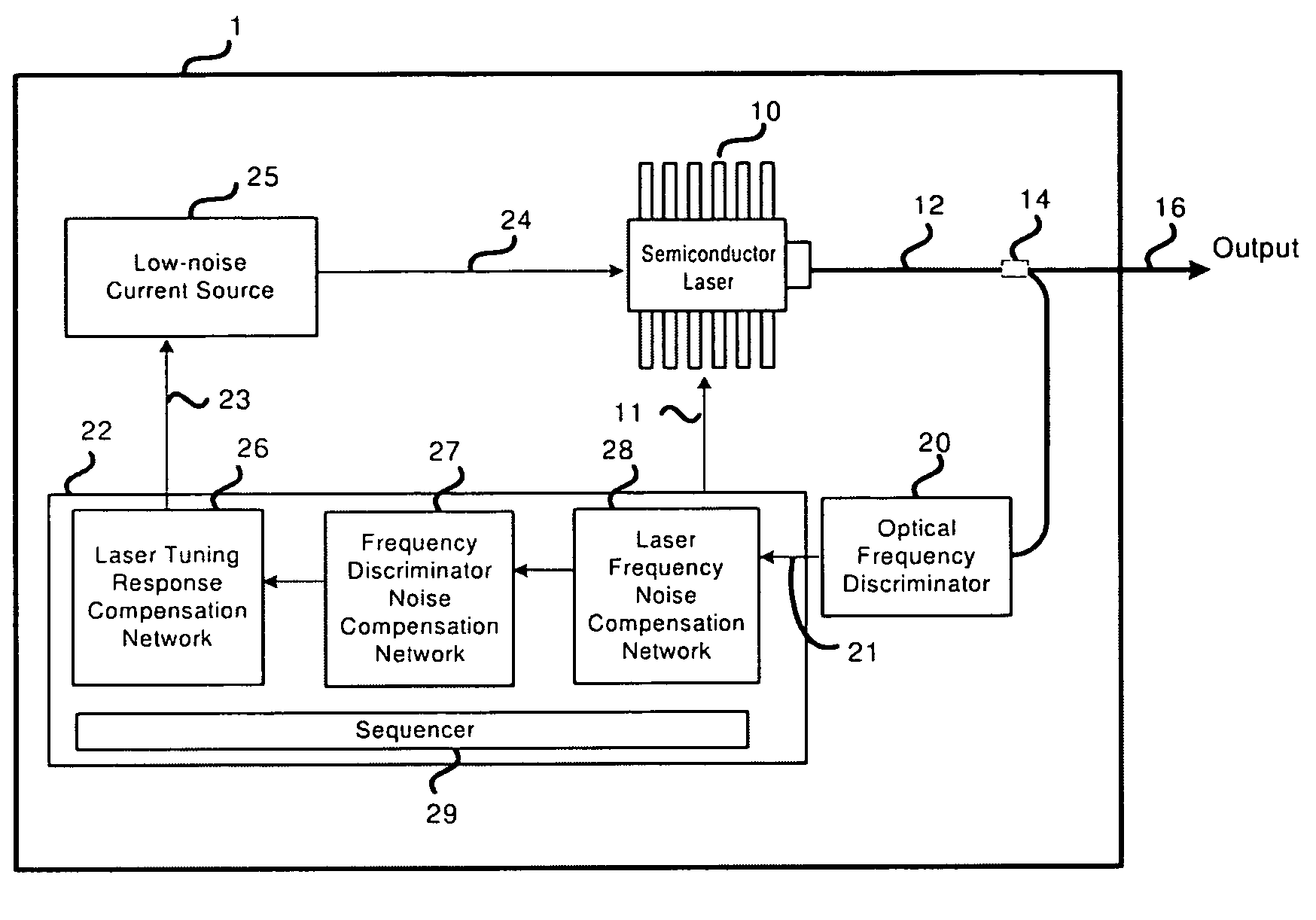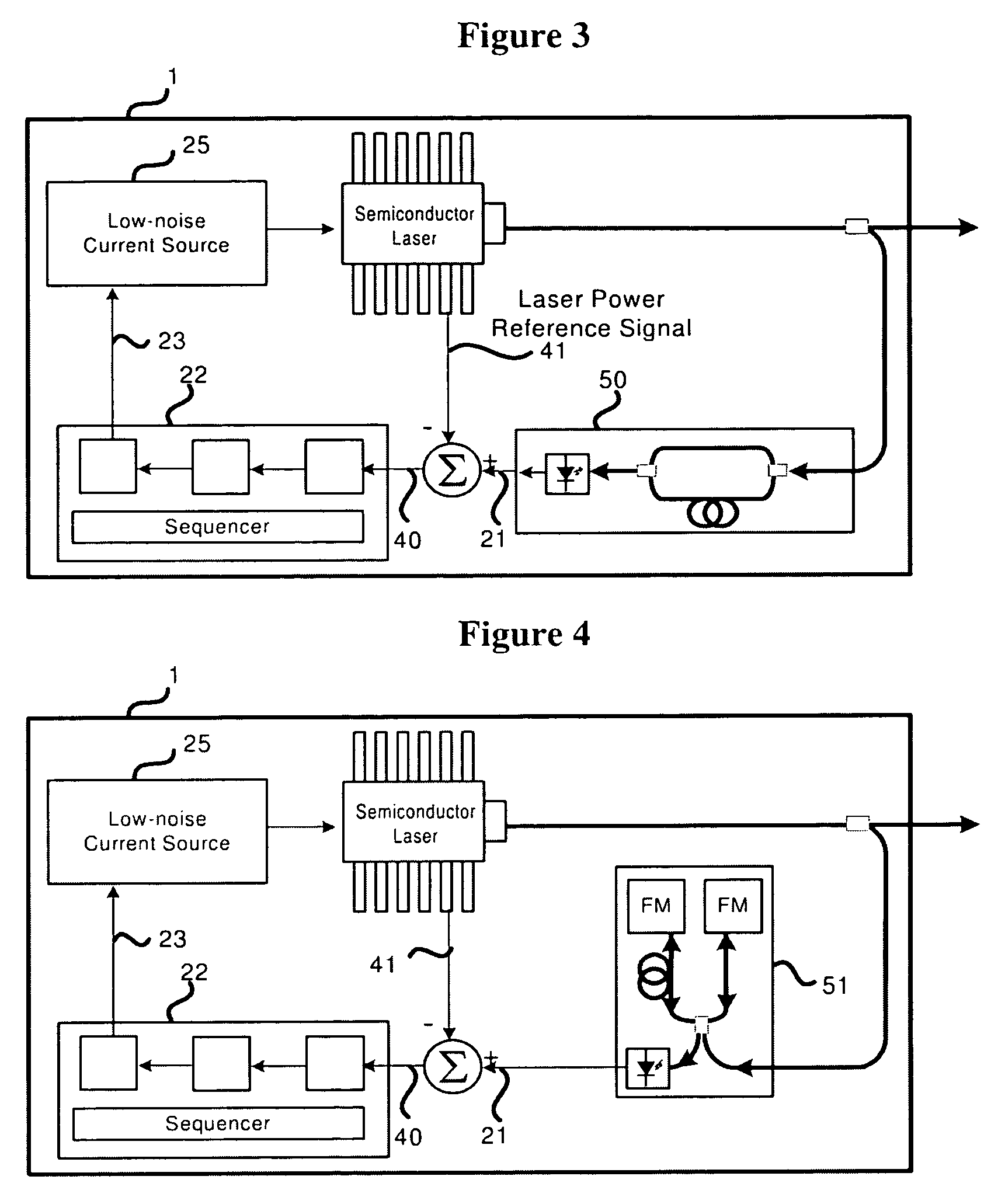Narrow linewidth semiconductor laser device
a semiconductor laser and narrow linewidth technology, applied in lasers, laser details, electrical equipment, etc., can solve the problems of large linewidth (5 khz), bulky, and relatively inefficient power consumption, and achieve high reliability
- Summary
- Abstract
- Description
- Claims
- Application Information
AI Technical Summary
Benefits of technology
Problems solved by technology
Method used
Image
Examples
Embodiment Construction
[0047]In the following description, similar features in the drawings have been given similar reference numerals and in order to lighten the figures, some elements are not referred to in some figures if they were already identified in a precedent figure.
[0048]The linewidth of semiconductor can be reduced by sending the laser light into a frequency discriminator that converts the frequency noise of the laser into intensity noise, by measuring this intensity with a photodetector and use this signal to compensate the frequency fluctuations of the laser by varying its injection current in an appropriate manner. Once the frequency locking loop thus described is established, the laser frequency will track very accurately the frequency fluctuations of the frequency discriminator within the bandwidth of that locking loop. The laser will therefore inherit the stability of the frequency discriminator. The short and medium term frequency noise of a well-designed frequency discriminator can be m...
PUM
 Login to View More
Login to View More Abstract
Description
Claims
Application Information
 Login to View More
Login to View More - R&D
- Intellectual Property
- Life Sciences
- Materials
- Tech Scout
- Unparalleled Data Quality
- Higher Quality Content
- 60% Fewer Hallucinations
Browse by: Latest US Patents, China's latest patents, Technical Efficacy Thesaurus, Application Domain, Technology Topic, Popular Technical Reports.
© 2025 PatSnap. All rights reserved.Legal|Privacy policy|Modern Slavery Act Transparency Statement|Sitemap|About US| Contact US: help@patsnap.com



